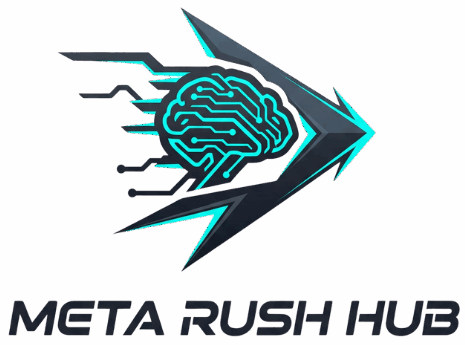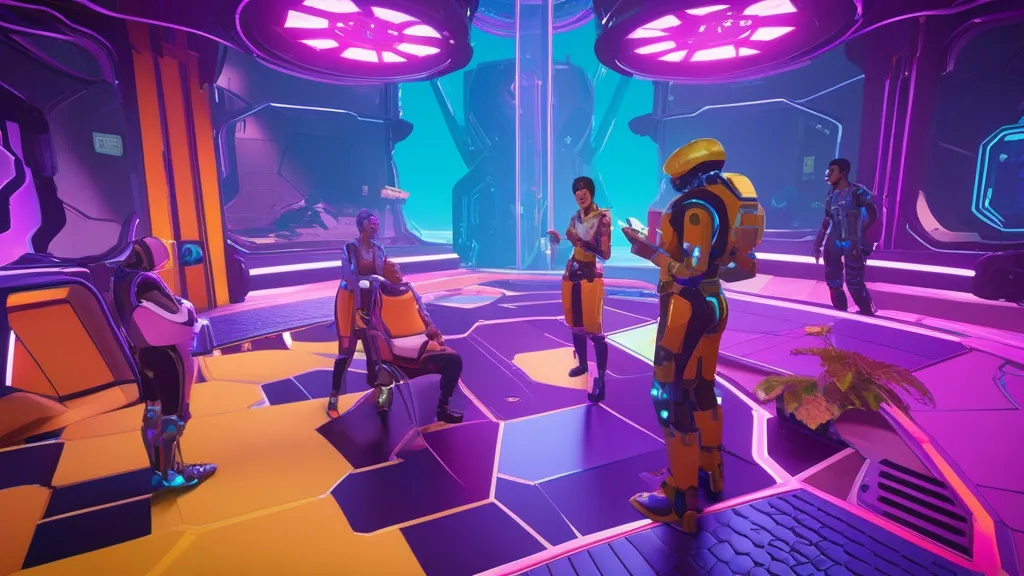When people ask me what I’ve been doing for the last decade, I say “working with ai in game development,” and then I pause to see if they think I mean Skynet or just teaching NPCs to stop headbutting walls. It’s mostly the second thing. In my experience, the real fun sits between simple tricks (pathfinding, finite state machines, navigation meshes) and fancy words people like to toss around (procedural generation, machine learning, dynamic difficulty). I’ve always found that a good game AI isn’t about being smart. It’s about being interesting. And fast. And not crashing, which is a surprisingly high bar.
How I Ended Up Being “The AI Person”

I didn’t plan this. I was the kid who made tiny 2D monsters chase my character in a platformer. The monsters got stuck on a single step. I laughed, then I couldn’t sleep because I had ideas. That’s still me. I still scribble ideas at 1 a.m. about why my bots keep circling a crate like there’s cake under it.
Over time, I became the person studios call when their AI enemies either rush players like lemmings or take cover behind explosive barrels. I’ve been yelled at by level designers (“Why does the sniper run into the kitchen?”), and I’ve yelled at myself (“Because your navmesh has a hole the size of Kansas, genius”). That loop? It’s the job. Little tweaks. Hundreds of them. A thousand tiny lies that look like intelligence.
What People Think Game AI Is vs. What It Actually Is
The Marketing Version
The buzzword soup: neural networks, emergent behavior, self-learning agents, “AI that adapts to you.” Sounds cool. Sounds expensive. In reality, you don’t need a PhD to make smart-feeling enemies. You need clean state machines, decent pathfinding, and a sense of humor when QA records yet another clip of your boss enemy doing a three-point turn into a wall.
The Real Version
Game AI is mostly this: pick a target, pick a tactic, move without falling off a ledge, don’t cheat too obviously, and be fun to fight or talk to. That’s it. The magic is how you tune it, how you fake anticipation, how you give NPCs personality with tiny rules. I call it the smoke-and-mirrors principle. The player fills in the gaps if you give them the right hints.
The Bedrock: Pathfinding, States, and Simple Brains
Let’s talk basic building blocks that never die:
- Pathfinding: Usually A*, often on a navigation mesh. You tell an agent where to go; it finds a route that doesn’t involve surfing tables.
- Finite State Machines (FSM): Idle, patrol, chase, attack, flee. Clear, simple, predictable. Great for most enemies.
- Behavior Trees: Nice for more complex decision flow. Easier to debug than spaghetti code. Still can become spaghetti if you’re reckless.
- Utility AI / GOAP (Goal-Oriented Action Planning): Agents score options and pick the best. Feels smart. Eats your CPU if you’re careless.
If you want a nice overview, skim this classic topic on artificial intelligence in video games. Ignore the scary math, keep the diagrams.
Procedural Content: When the World Builds Itself (Sort Of)
I love procedural generation. Done right, it feels fresh. Done wrong, it feels like walking through five copies of the same hallway. I’ve shipped roguelike levels that felt alive and also shipped caves that looked like someone spilled oatmeal. The trick is constraints. Lock the rules. Bias the randomness. Put guardrails everywhere.
If you’re curious about the background, the Wikipedia page on procedural generation is a good time sink. It’s basically controlled chaos with math hats.
What Procedural Works Great For
- Loot and item stats: Easy to tune, low risk, keeps players engaged.
- Terrain and dungeons: With strong constraints, very replayable.
- Enemy waves: Swap compositions, pacing, and spawn points to keep tension up.
- Ambient behavior: Wildlife, crowds, chatter, small surprises.
Where It Bites You
- Story beats: Hand-crafted beats land harder. Randomness can dilute drama.
- Complex puzzles: Randomization often breaks solvability or player learning.
- Platforming: Random gaps = random frustration. Painful.
Machine Learning in Games: Where It Fits, Where It Doesn’t
I’ve trained agents in labs. Super cool demos. But games ship. Demos don’t. So here’s the practical bit:
Great Use Cases
- Player modeling: Predict churn, adjust difficulty gently, suggest modes.
- Dynamic difficulty: Not rubber-banding nonsense. Subtle tuning—enemy accuracy, resource drops, spawn delays.
- QA automation: Bots that explore maps, stress-test edges, find stuck points faster than humans.
- Content tagging: Auto-label levels, classify voice lines, cluster player behaviors.
Meh or Risky
- Core enemy behavior that learns live: Hard to control, hard to balance, scary for anti-cheat on multiplayer.
- Black-box decisions: Designers can’t tune what they can’t see. Debugging becomes prayer.
- Determinism: If it’s non-deterministic, replicating a bug is… let’s not.
I’ve had good luck with hybrid setups: old-school logic on top, tiny ML helpers underneath. For example, use a small model to predict “player is rushing” vs “player is cautious,” then choose a behavior set. Easy to test. Easy to tune.
My Favorite Old Tricks That Still Work
Some things age like wine. Or at least like cheese.
| Technique | What It Is | When I Use It | Gotcha |
|---|---|---|---|
| Finite State Machine | Small set of states with transitions | Grunts, guards, simple allies | Explosion of transitions if you add too many states |
| Behavior Tree | Hierarchical tasks, selectors, sequences | Bosses, companions, quests with branches | Can get deep and confusing; name things well |
| Utility AI | Score options and pick the best | Squad tactics, resource use, cover choice | Tuning scores is an art; watch CPU cost |
| Navigation Mesh | Walkable surface graph | Any 3D movement with obstacles/height | Gaps produce “ghost walls” and goofy detours |
| Steering Behaviors | Seek, flee, arrive, separation, cohesion | Flocks, crowds, driving, orbiting enemies | Can wobble or jitter; add damping |
| Blackboard | Shared memory for agents or systems | Coordinated squads, sense-sharing | Scope it; global blackboards become chaos |
| Rule-Based Dialogue | Simple conditions trigger lines | Ambient chatter, barks, vendors | Repetition; schedule lines and add cooldowns |
Designing Behavior That Feels Human (Without Being Human)
Make Enemies Miss On Purpose
Real aim is boring. Controlled misses build tension. I bias enemy shots to graze early, then tighten accuracy if the player is dominating. It feels fair. Not aimbotty.
Give NPCs Tiny Flaws
Players love tells and quirks. The shield guy always hesitates on corners. The archer steps back twice, not three times. Predictable enough to learn, surprising enough to stay fresh.
Telegraph Decisions
NPC shouts “cover me!” before rushing. A drone beeps faster before exploding. Signals make behavior readable. Readable means “smart” to the player, even if it’s just a timer.
Performance, Determinism, and Other Ways to Lose a Weekend
I’ve lost weekends to “rare” bugs that only happen on one teammate’s machine. You know the kind. So—some notes I wish someone forced me to tattoo on my arm:
- Budget your CPU. Put a frame-time cap for AI updates. Stagger heavy ticks. Batch expensive queries.
- Be deterministic on server-authoritative games. Repro is life. Sync random seeds. Log decisions.
- Don’t trust physics fully. Use simple sweeps or raycasts to confirm space before moving.
- Add “escape hatches.” If a bot is stuck for 2 seconds, warp a step, or trigger a mini-reset. Hide it with an animation if you can.
- Instrument everything. Counters, heatmaps, decision logs. You can’t tune what you can’t see.
Making Crowds and Companions Suck Less
Companions
Companions must be helpful but not perfect. If they kill-steal, players get annoyed. If they whiff every shot, players get annoyed. I bias companions to deal meaningful chip damage, finish near-dead enemies, and call out supplies. They also talk just enough. Not radio DJs.
Crowds
Crowds should look like life without melting your CPU. Use simple steering, lanes, and “ghosting” on high density frames. Spawn and despawn outside the camera. And never let them all pick the exact same walk speed. That’s how you get spooky marching.
Tools I Actually Touch Weekly
Here’s a very real, very unglam list. I tweak this stuff all the time.
| Tool/Thing | Why I Use It | Notes |
|---|---|---|
| Debug Draw | Visualize paths, cones, state labels | Instant clarity; save hours |
| Heatmap Generator | See where agents die, get stuck | Pair with navmesh overlays |
| Behavior Profiler | Track node timings, failures | Find that one expensive selector |
| Batch Sim Runner | Sim 100 matches overnight | Catch rare bugs early |
| Designer-Friendly Sliders | Exposed accuracy, aggression, vision | Let designers own the feel |
Little Rules I Live By
- If a behavior needs a paragraph to explain, it’s too complex.
- Pick defaults that are safe. NPCs should prefer open space unless told otherwise.
- Randomness needs bias and clamps. Never pure random.
- Everything needs cooldowns. Yes, everything.
- Make logs human-readable. Future you will thank you at 3 a.m.
Player-Facing Lies That Work
Rubber Ammo
Make enemy bullets disappear at long range if they miss the player by a tad. Players won’t know. They’ll “feel” like they dodged.
Social Awareness
Make enemies shout each other’s names. Fake relationships. Players assume there’s a deeper system. There might be. There doesn’t have to be.
“I See You” Moments
Make an enemy “notice” the player’s weapon swap once per level. It’s a script. It feels alive. Use sparingly.
Debugging Horror Stories (Because You Asked)

The Vanishing Sniper
We had a sniper who kept “teleporting.” Turned out his nav link was flagged wrong and he thought a roof edge was a ladder. He didn’t teleport. He swan-dived beautifully. QA called it a feature. We did not.
The Infinite Reload
Soldier bot kept reloading forever. The reload animation event never fired because the sound tag was missing. Not even code. A sound tag. Two days, gone.
The Puddle Problem
Agents avoided a tiny wet decal like it was lava because the navmesh bake picked up a slope glitch. We shaved 0.1 off the slope threshold. Instant bravery.
Content Pipelines: Keep Your AI Friends Fed
I’ve watched artists hand-place cover markers and then curse when we changed the map layout. My rule: automate where you can, but give humans override power. Auto-tag cover candidates. Let designers approve or ban. Bake navmesh nightly. Re-bake on demand when someone moves a couch. Because someone always moves a couch.
Events and Hooks Make Life Easy
- OnPlayerSpotted: set alert, call squad, mark last seen.
- OnNoiseHeard: investigate with radius and time decay.
- OnLowAmmo: switch stance, retreat, call for resupply.
- OnAllyDown: throw smoke, pull body, bark a line.
These are boring names. Boring is good. Clear is fast.
If You’re New And Want To Build Something That Doesn’t Implode
Do This, In This Order (More or Less)
- Make one enemy that idles, chases, and attacks. That’s it.
- Add pathfinding on a navmesh. Print the path. Draw it.
- Add a cooldown to everything. Attack, spot, switch target.
- Give it one weakness the player can learn. Shields hate explosions.
- Spawn three of them. See if they trip over each other. Fix that.
- Add one “smart” choice: pick cover with line-of-sight preference.
- Instrument: show current state above its head. Ugly debug text is fine.
- Bring in a friend who didn’t build it. Watch them play silently. Take notes. Fix.
Multiplayer Brain Teasers
In PvP or co-op, AI must behave with server authority. Clients can predict animation and minor movement, but decisions need to be replayable. Log seeds. Avoid time-based randomness unless synchronized. And never let ML models wander off in live matches unless you like angry bug reports titled “The bot stole my grenade.”
Yes, You Should Read A Bit
If you’re the type who likes to dive deep, I respect that. Read about navigation meshes, behavior trees, and finite-state machines. Even just the summaries help. Keep a note of how these ideas connect to your game’s feel. Don’t copy-paste from a generic tutorial and expect magic. Tune for your camera, your controls, your level shapes.
Why I Still Love This Job
Because it sits right at the edge of design and code. I get to make feelings out of logic. A little tension here, a little relief there. The first time a player messages, “That guard felt real, I swear he knew I was flanking,” I grin. He didn’t know. I just weighted the “check left” action by 0.2 when you sprinted.
Stuff I Wish Someone Told Me Year One
- 90% of problems are data, not code. Bad tags, missing markers, wrong layers.
- Designers will surprise you. Give them knobs, not hard locks.
- Audio sells intelligence. Footsteps, barks, stingers. Use them.
- Players forgive a dumb move if the result is fun or funny.
- Document “how to fail safely.” Your future teammates need it.
Random Notes From My Notepad
- Clamp vision cones to camera FOV in stealth. Prevent “they saw me through a pinhole.”
- Cheat fair: Give NPCs tiny knowledge of map topography so they don’t look clueless.
- Bias group fire. Stagger shots. No laser walls.
- Dynamic difficulty is a scalpel, not a hammer. Nudge, don’t shove.
- One surprise per encounter. No fireworks factory every time.
A Quick Reality Check on Buzzwords
“Emergent Behavior”
Usually means “we layered simple rules and didn’t break the simulation today.” Celebrate it, sure. But log it. Recreate it. Make it reliable enough for players to learn.
“AI Director”
Sounds fancy. It’s a scheduler with feelings. It looks at player stress (ammo low, health low, time since last win), then decides to spawn or chill. Doable. Useful. Not magic.
“Self-Learning NPCs”
Fun for a dev diary. Risky for a shipped feature. If you try it, lock the action space, sandbox it, and keep a manual override.
About Me, Since You’re Here
People sometimes ask where I do this weird mix of code and design. I’ve written more about my background and the kind of projects I’ve touched on my about page. It’s the short version of a long road with lots of busted navmeshes.
One More Thing Before I Go Make Coffee
Use ai in game development when it’s right for the job, not because it’s trendy. Old tricks plus good taste beat new tricks with no taste. If a fifth-grader can beat your boss enemy because they learned the pattern? That’s not dumb AI. That’s great design with readable behavior. The fancy stuff can wait until you need it.
FAQs
- Q: How do I stop my NPCs from getting stuck on corners? A: Check your navmesh for gaps, lower slope thresholds a bit, and add a tiny “unstick” nudge if velocity stays near zero for a second.
- Q: Should I use behavior trees or FSMs? A: If it’s a simple enemy, FSM. If it’s complex with lots of branching and reuse, behavior tree. You can mix them. Nobody will arrest you.
- Q: How do I make AI feel fair? A: Telegraph actions, add small delays, and cap accuracy. Make mistakes on purpose, but smart ones.
- Q: Is machine learning worth it for enemies? A: Usually no. Great for analytics and QA bots. For enemies, rules plus tuning win most days.
- Q: Any quick tip for better crowds? A: Vary speeds slightly, add separation steering, and cull updates when off-screen. It helps a lot.

James Carter: Your competitive edge. I cover Patch Notes, Speedruns, Battle Royale Strategy, Multiplayer Trends, and Game Dev Insights. Let’s get into it!




I never knew game AI was so complex and fascinating! The “smoke and mirrors principle” is genius.
Game AI thrives on being entertaining and captivating, not just smart. Fun read on the magic behind it all!
Love the insight on game AI being more about being interesting and fun than being smart. A great perspective!
How do you balance faking intelligence with creating challenging enemies in game development AI?